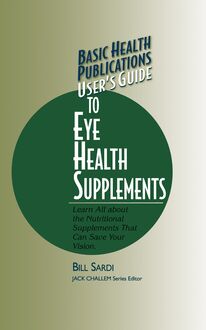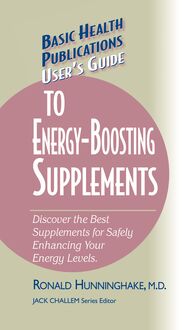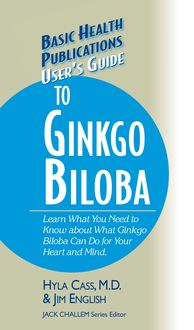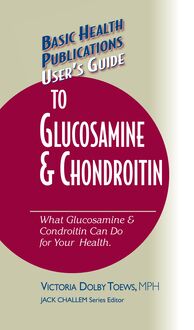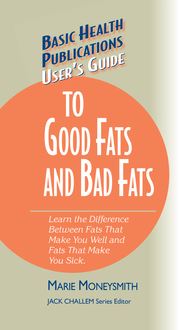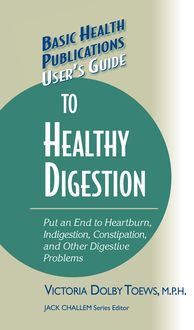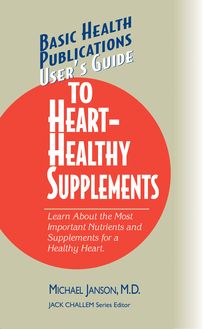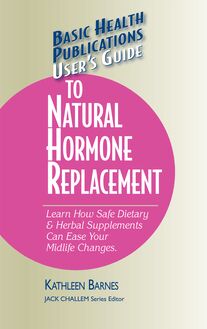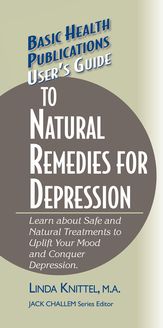-
 Univers
Univers
-
 Ebooks
Ebooks
-
 Livres audio
Livres audio
-
 Presse
Presse
-
 Podcasts
Podcasts
-
 BD
BD
-
 Documents
Documents
-
- Cours
- Révisions
- Ressources pédagogiques
- Sciences de l’éducation
- Manuels scolaires
- Langues
- Travaux de classe
- Annales de BEP
- Etudes supérieures
- Maternelle et primaire
- Fiches de lecture
- Orientation scolaire
- Méthodologie
- Corrigés de devoir
- Annales d’examens et concours
- Annales du bac
- Annales du brevet
- Rapports de stage
La lecture à portée de main
Vous pourrez modifier la taille du texte de cet ouvrage
Découvre YouScribe en t'inscrivant gratuitement
Je m'inscrisUser's Guide to Anti-Aging Nutrients , livre ebook
Découvre YouScribe en t'inscrivant gratuitement
Je m'inscrisEn savoir plus
Vous pourrez modifier la taille du texte de cet ouvrage
En savoir plus

Description
Sujets
Informations
| Publié par | Turner Publishing Company |
| Date de parution | 01 janvier 2004 |
| Nombre de lectures | 0 |
| EAN13 | 9781591206668 |
| Langue | English |
| Poids de l'ouvrage | 1 Mo |
Informations légales : prix de location à la page 0,0298€. Cette information est donnée uniquement à titre indicatif conformément à la législation en vigueur.
Extrait
The information contained in this book is based upon the research and personal and professional experiences of the authors. It is not intended as a substitute for consulting with your physician or other healthcare provider. Any attempt to diagnose and treat an illness should be done under the direction of a healthcare professional.
The publisher does not advocate the use of any particular healthcare protocol but believes the information in this book should be available to the public. The publisher and authors are not responsible for any adverse effects or consequences resulting from the use of the suggestions, preparations, or procedures discussed in this book. Should the reader have any questions concerning the appropriateness of any procedures or preparations mentioned, the authors and the publisher strongly suggest consulting a professional healthcare advisor.
Series Editor: Jack Challem Editor: Stephany Evans Typesetter: Gary A. Rosenberg Series Cover Designer: Mike Stromberg
Basic Health Publications User’s Guides are published by Basic Health Publications, Inc.
8200 Boulevard East North Bergen, NJ 07047 1-800-575-8890
Copyright © 2004 by Jack Challem and RoseMarie Gionta Alfieri, M.A.
ISBN 13: 978-1-59120-666-8
ISBN: 1-59120-093-8
All rights reserved. No part of this publication may be reproduced, stored in a retrieval system, or transmitted, in any form or by any means, electronic, mechanical, photocopying, recording, or otherwise, without the prior written consent of the copyright owner.
Printed in the United States of America
10 9 8 7 6 5 4 3 2 1
C ONTENTS
Introduction
1. Some Basics on the Question of Aging
2. Acetyl-L-Carnitine
3. Alpha-Lipoic Acid
4. Melatonin
5. B-Complex Vitamins
6. Calcium
7. Coenzyme Q 10
8. DHEA
9. Vitamins C and E
10. Herbs
Conclusion
Selected References
Other Books and Resources
I NTRODUCTION
O ne of the least pleasant facts of life is that as long as we are alive we will age. Old Man Time is an equal opportunity nemesis, and not one of us can outrun him or escape him. Starting in our twenties, time begins to chip away at our health and fitness through the downward pull of gravity, environmental damage, old-fashioned wear and tear, cellular changes in our bodies, and through the effects of lifestyle choices. That is a simple, unchangeable reality.
Aging is not a single condition. It can most accurately be defined as the accumulation of those time-related changes that lead eventually to disease and death. Its varied effects are felt from middle age (roughly, age forty to age sixty). Decreased energy and sexual drive, digestive troubles, memory deterioration, wrinkles, thinning skin, muscle atrophy, and assorted diseases, such as heart disease or diabetes, are some of the most common.
While none of us can permanently stop the ticking clock of our lives, is there anything we can do to forestall or alleviate some of these age-related conditions? Is it possible to prevent some of the damaging effects of aging in order to slow down the process, and to enjoy greater energy and health well into our middle and later years?
The answer to both of these questions is yes. Increasingly, scientific evidence suggests that while we may not be able to stop the aging process, it is possible to prevent many of the diseases associated with aging and to slow the rate at which our bodies age. Numerous studies have identified several nutritional supplements that can reverse or prevent the damage to our cells that not only ages us in appearance, but also in creases our risk for several age-related diseases, including diabetes, Alzheimer’s disease, heart disease, and cancer.
Many of these supplements, which will be presented in this book, are antioxidants. These groups of vitamins, minerals, and enzymes are extremely important for anti-aging because they help to protect the body against free-radical damage. Free radicals are atoms that contain unpaired electrons. They damage cells in an organism by stealing electrons in an effort to become stable. This damage causes many of the undesirable and unhealthy effects of aging. The free-radical theory of aging is discussed more fully in Chapter 1 .
This book also delves into lifestyle issues, such as diet, exercise, and unhealthy habits, all of which contribute to how we age. This is one area that, unlike our genetic makeup, is entirely within our control. Making simple changes in these areas of your life can work wonders in helping you to lead a youthful life—whatever your age. You may have a biological age of sixty, but with a combination of healthy lifestyle habits and supplementation with nutrients, your actual age in terms of vitality and risk for disease may be far younger.
According to the National Center for Health Statistics, the life expectancy for Americans has reached an all-time high of nearly seventy-seven years, with an increase in people living into their nineties and even hundreds. It is no longer such a surprise to read about someone celebrating a 100th birthday. You have to ask yourself though, how healthy, how vital is the person? For most of us, it is desirable to live a long life, but how much better for that life to be full of good health and vitality! The User’s Guide to Anti-Aging Nutrients will help you make choices about those nutrients that can enable you to live your youngest—and healthiest—at any age. Here’s to being eighty years—or more—young!
CHAPTER 1
S OME B ASICS ON THE Q UESTION OF A GING
Y ou’ve probably known people who at age fifty or even sixty have the glow, energy, and vibrancy of people in their early twenties. They just exude health and well-being, are active, em brace life with enthusiasm, and don’t seem to be plagued by the usual age-related problems. Most likely, they are living lives that support energy production rather than depletion. There are so many factors that contribute to how well you will age. A major one of these is the amount and type of damage your cells have sustained due to free-radical production in your body throughout your life. In addition, there are particular lifestyle habits you may choose and maintain, which can either accelerate or slow the aging process. In this chapter, we’ll explore these factors as well as some key ways you can put the brakes on aging.
Free Radicals Gone Amok
Free radicals occur in all living things. An atom, when it is stable, contains a balance of paired electrons, which encircle the nucleus. Free radicals are atoms or molecules in which at least one electron is unpaired, causing an in stability. This instability causes the electrons to be very reactive—they can bond easily with other molecules and, in so doing, can cause damage through the process we know as oxidation.
Free Radicals Atoms with unpaired electrons that damage cells and cause aging.
The most common free radical in humans is an oxygen radical, which occurs in the mitochondria when an unpaired electron interacts with oxygen. Mitochondria are our cells’ power plants, the tiny structures in our cells that provide energy in the chemical form of adenosine triphosphate (ATP). ATP provides the fuel for all of our life functions, helping our hearts to pump and our lungs to take in and distribute oxygen when we breathe. When free radicals are formed in the mitochondria, they reduce the power of the mitochondria to produce energy efficiently. Worse yet, they often damage DNA, as well as proteins and fats, inside the mitochondria.
According to the free-radical theory of aging, it is this damage that causes us to age and to be come more vulnerable to certain diseases such as atherosclerosis (hardening of the arteries) and cancer. In addition, damage done by free radicals to collagen and elastin can cause our skin to thin and age.
And yet, free radicals do play an important role in maintaining good health. After all, they are created as a natural byproduct of oxidation, which occurs when the body uses oxygen and the nutrients from the foods we eat to create energy. Some free radicals work to fight disease; for example, those produced by the immune system are important for fighting viruses and bacteria. For such purposes, free radicals should be present in small numbers in our bodies. The problem occurs when these free radicals are produced in excess. In addition to being formed through the normal oxidation of nutrients, free radicals are created through exposure to radiation and pollutants, and through the breakdown of fat into energy, as in aerobic exercise.
Antioxidants to Sop up the Damage
Just as the body produces free radicals, it also has its own means of neutralizing them when there are too many or after their work is done. Our bodies produce free-radical scavengers in the form of certain enzymes. These enzymes attack and neutralize the free radicals. However, even with this built in clean-up crew, our bodies can be overwhelmed by excessive free radicals when under stress by environmental pollutants, poor dietary habits, or destructive habits, such as smoking or excessive alcohol consumption. Still, there are ways that we can reduce the number of potentially damaging free radicals in our bodies.
In addition to those scavengers that occur naturally in the body, several antioxidant nutrients, such as vitamins E and C, the hormone melatonin, and alpha-lipoic acid keep free-radical levels in check by attaching to the free electrons in a free radical and neutralizing it. The problem is that many of us do not consume an adequate amount of antioxidants through our diets alone. This is especially true as we age, when we need even more antioxidant activity because of the free radicals that have built up over the years.
Researchers have found that dietary supplementation with antioxidants may help to fight age-related diseases thought to be caused, at least in part, by an excess of free radicals. These diseases include atherosclerosis, cance
-
 Univers
Univers
-
 Ebooks
Ebooks
-
 Livres audio
Livres audio
-
 Presse
Presse
-
 Podcasts
Podcasts
-
 BD
BD
-
 Documents
Documents
-
Jeunesse
-
Littérature
-
Ressources professionnelles
-
Santé et bien-être
-
Savoirs
-
Education
-
Loisirs et hobbies
-
Art, musique et cinéma
-
Actualité et débat de société
-
Jeunesse
-
Littérature
-
Ressources professionnelles
-
Santé et bien-être
-
Savoirs
-
Education
-
Loisirs et hobbies
-
Art, musique et cinéma
-
Actualité et débat de société
-
Actualités
-
Lifestyle
-
Presse jeunesse
-
Presse professionnelle
-
Pratique
-
Presse sportive
-
Presse internationale
-
Culture & Médias
-
Action et Aventures
-
Science-fiction et Fantasy
-
Société
-
Jeunesse
-
Littérature
-
Ressources professionnelles
-
Santé et bien-être
-
Savoirs
-
Education
-
Loisirs et hobbies
-
Art, musique et cinéma
-
Actualité et débat de société
- Cours
- Révisions
- Ressources pédagogiques
- Sciences de l’éducation
- Manuels scolaires
- Langues
- Travaux de classe
- Annales de BEP
- Etudes supérieures
- Maternelle et primaire
- Fiches de lecture
- Orientation scolaire
- Méthodologie
- Corrigés de devoir
- Annales d’examens et concours
- Annales du bac
- Annales du brevet
- Rapports de stage

